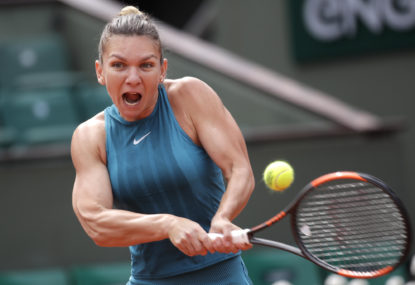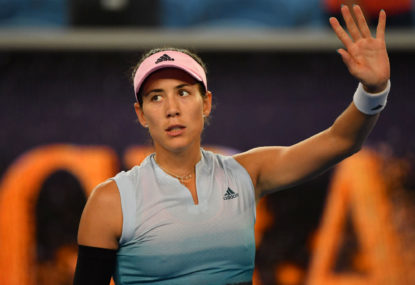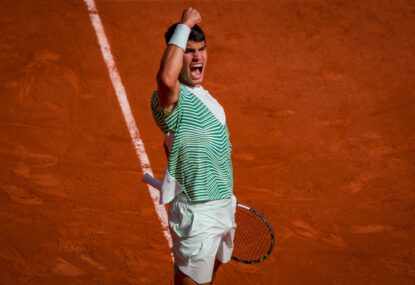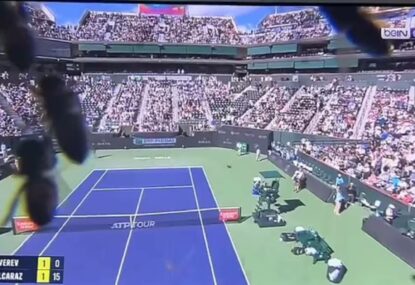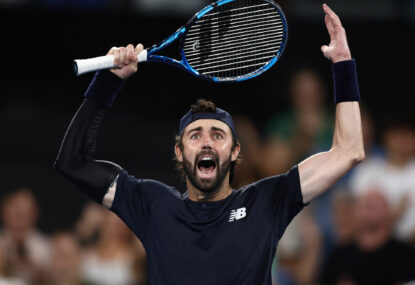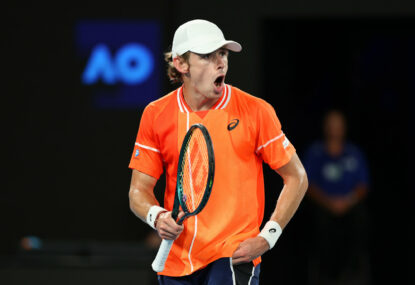The French Open is over for another year, and while Rafael Nadal struck ‘La Undecima’ in the men’s tournament, in the women’s Simona Halep buried the demons of her past failures to finally lift her maiden grand slam title.
A decade after winning the girls’ title, Halep fulfilled her destiny to win the women’s title, defeating Sloane Stephens in the final in three sets and putting to bed the disappointments of her past three defeats in major finals.
This included last year’s meltdown at Roland Garros when she lost to Jelena Ostapenko after leading by a set and 3-0 in the second, as well as January’s Australian Open defeat to Caroline Wozniacki in what has been regarded as one of the greatest grand slam women’s finals of all time.
The Romanian appeared set for more disappointment in a grand slam final when Stephens, who entered her first French Open final undefeated in six previous career finals, including last year’s US Open final, broke early in the opening set en route to taking the first set 6-3.
The 25-year-old American then broke early in the second, but Halep, who had been in Stephens’ position 12 months earlier, roared back to take the second 6-4 before a double break saw her go up 4-0 in the third.
From there she would comfortably serve it out 6-1 to bury the demons of three previous grand slam final defeats and, most importantly, justify her status as the world’s top-ranked female tennis player.
For Stephens, her seventh career final proved to be the unluckiest as she suffered her first defeat after previously being undefeated in such matches, including defeating Madison Keys in last September’s US Open final.
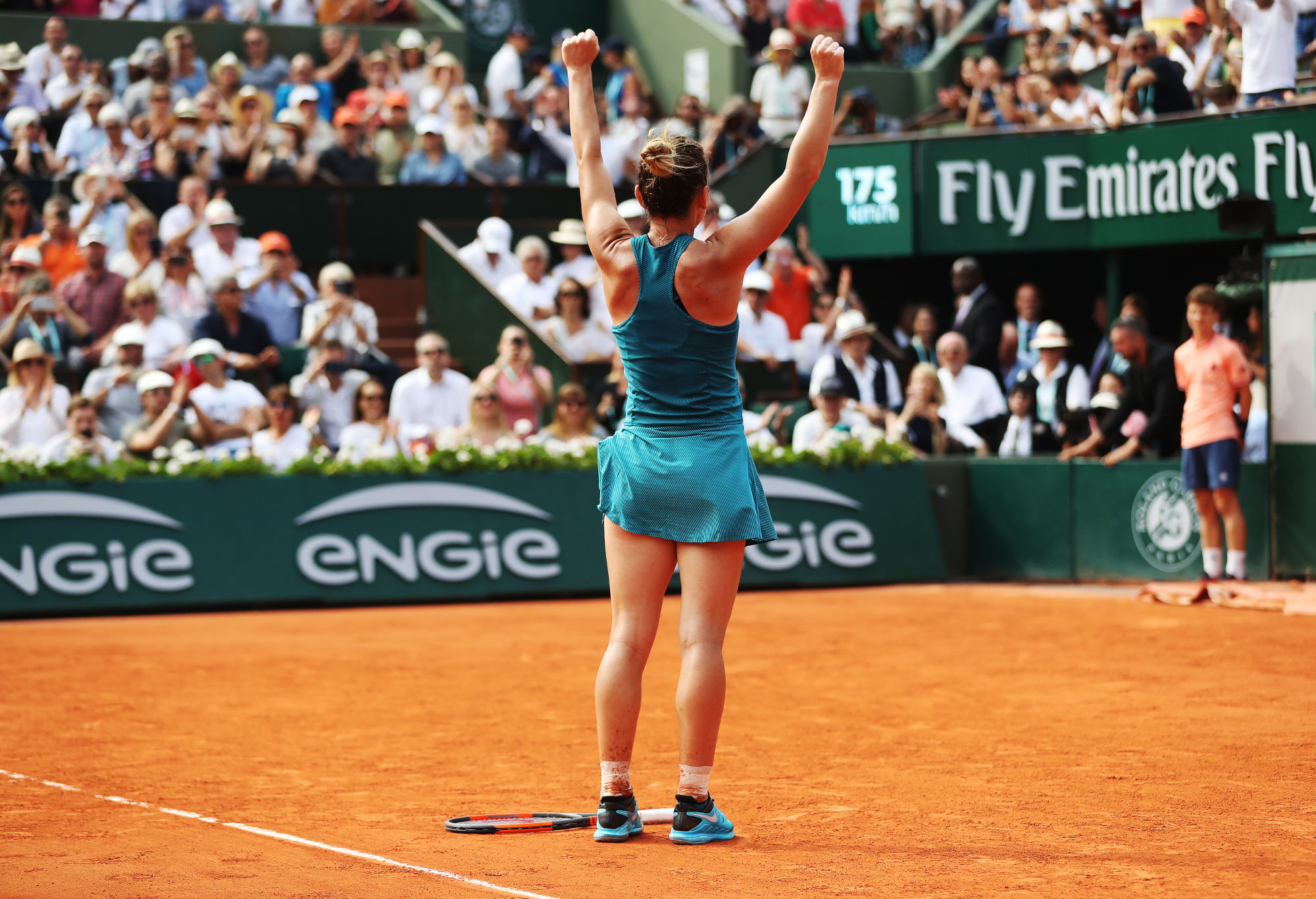
(Ian MacNicol/Getty Images)
The result also meant Jelena Ostapenko, last year’s champion, finished at the bottom of the tournament’s longest losing chain (Simona Halep, Sloane Stephens, Madison Keys, Yulia Putintseva, Barbora Strycova, Katerina Siniakova, Kateryna Kozlova and Jelena Ostapenko).
The Latvian, who defeated Halep in last year’s final, became just the second woman (after Anastasia Myskina in 2005) to have her title defence ended in the first round and joins the likes of Mary Pierce, Caroline Wozniacki, Ana Ivanovic and Jelena Jankovic as notable grand slam wooden spooners.
Ostapenko’s early departure was one of many to rock the women’s draw, with both the Williams sisters as well as former champion Francesca Schiavone and 2012 finalist Sara Errani all failing to reach the quarter-finals.
One player who benefited most was two-time champion Maria Sharapova, who was spared a fourth-round confrontation against her career nemesis, Serena Williams, after the 36-year-old withdrew mid-tournament due to a pectoral injury she suffered during a doubles match with her sister Venus.
The Russian, who was back at Roland Garros for the first time since 2015 after serving a recent doping ban, was eventually hammered by Garbine Muguruza in the quarter-finals.
The three games she won was the least she had won in a grand slam match since she lost to Victoria Azarenka in the final of the 2012 Australian Open.
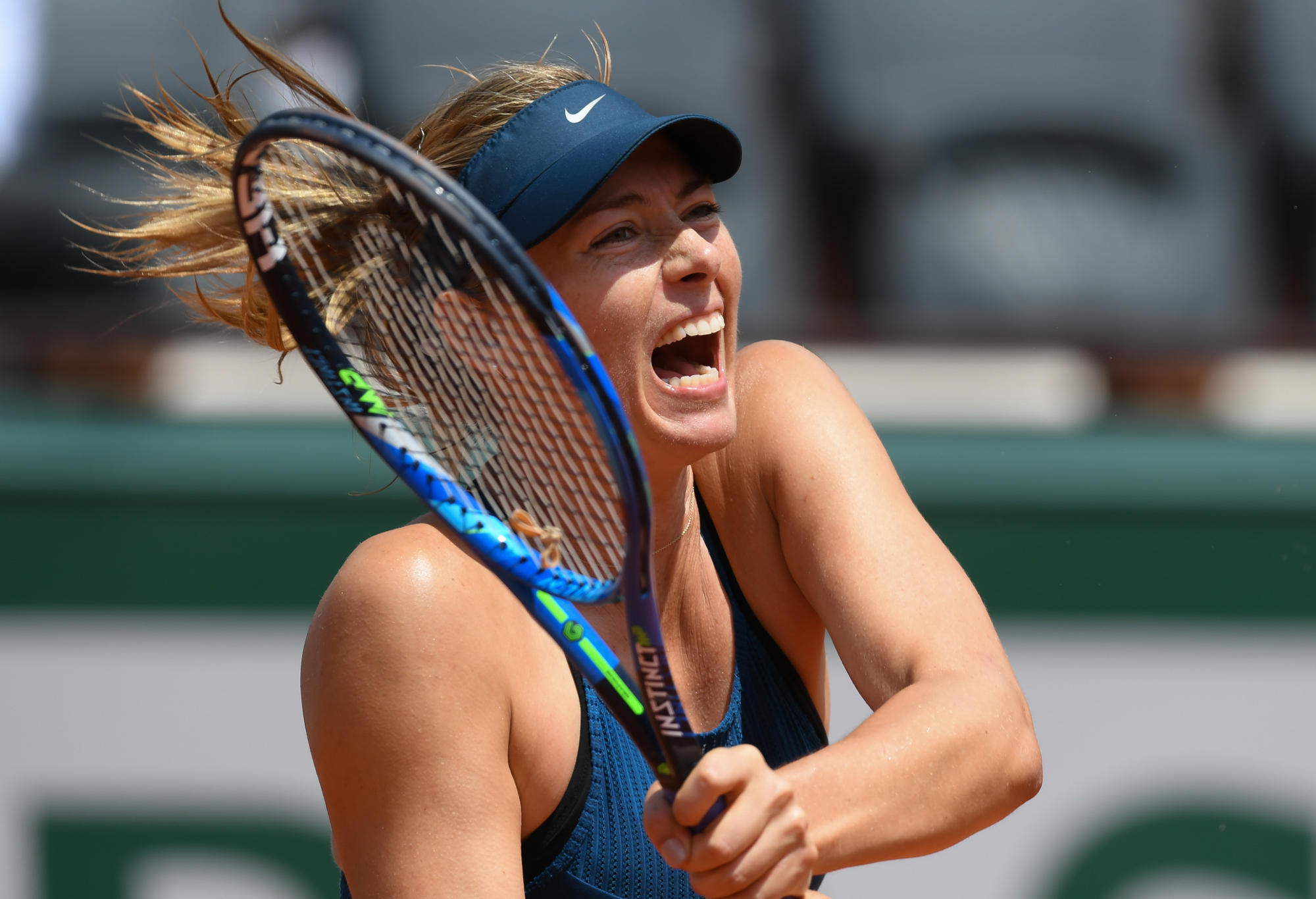
(CTK via AP Images)
The Spaniard, meanwhile, became the fifth player born in the 1990s (after Caroline Wozniacki, twice, and Petra Kvitova, Michelle Larcher de Brito and Anastasija Sevastova), and the youngest of them (Muguruza was born on 8 October 1993), to defeat the Russian at a major.
As the big names fell, 2016 champion Muguruza firmed in title favouritism until she met Halep in the semi-finals, winning just five games. The result meant the Romanian would retain the world number one ranking following the tournament regardless of how she fared in the final.
Her three-set win over Sloane Stephens in the championship match comes a decade after she won the girls’ title by defeating compatriot Elena Bogdan in the final, also in three sets.
This also means that the WTA top four (Halep, Wozniacki, Muguruza and Stephens) are current holders of the last four majors, with Muguruza to defend her Wimbledon title next month and Stephens to do likewise at the US Open, while Wozniacki won the Australian Open earlier this year.
[latest_videos_strip]
It was in 2008, the year Halep won the French Open girls’ title, in which Rafael Nadal won his fourth title at Roland Garros, coming at a time when he had yet to enjoy the same success at the other three majors.
A decade on and the 32-year-old Spaniard, who has in the intervention completed a career golden slam, remains the undisputed king of clay after taking out his 11th crown in Paris by defeating first-time grand slam finalist Dominic Thiem in the final.
Thiem, the second man born in the 1990s (after Milos Raonic at Wimbledon in 2016) to reach a major final, entered the championship final having inflicted Nadal’s two most recent defeats on the red dirt, doing so in Rome last year as well as in Madrid last month, both at the quarter-final stage.
But facing Nadal in a French Open final proved to be a step too far, and after a competitive first set, the Spaniard would claim a straight-sets victory (6-4, 6-3, 6-2) to claim his 17th grand slam title and draw to within three of the all-time men’s record held by Roger Federer.
The victory, which was confirmed after Thiem sent a backhand return long in the eighth game of the third set, also saw Nadal successfully retain the world number one ranking, which he would have lost had he done anything but win the title.
However, there is the possibility that he may not be seeded number one at Wimbledon after all owing to the fact that Federer is the defending champion there while Nadal has struggled on the grass courts in recent years (he did, however, win the Mercedes Cup on the surface in 2015).
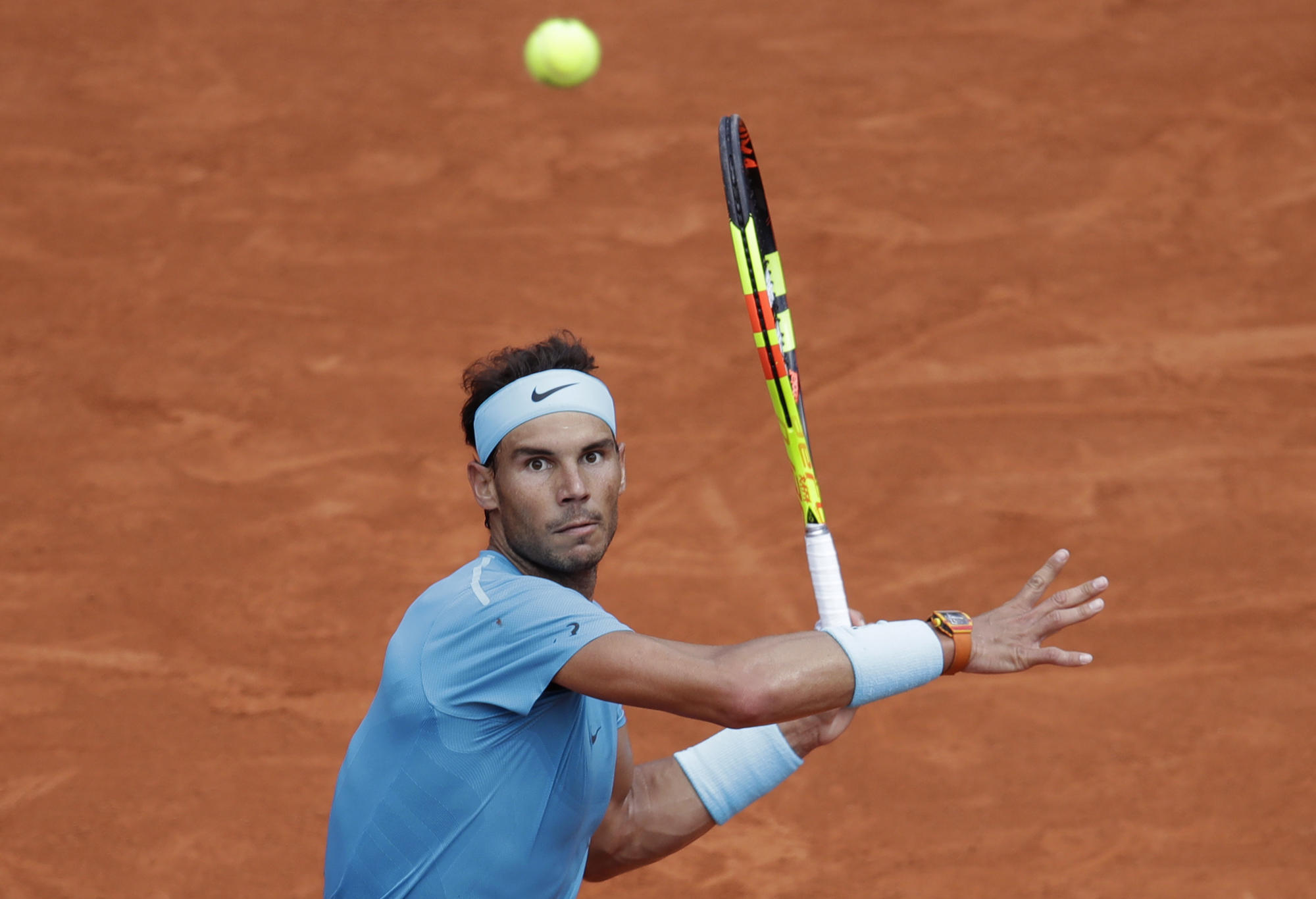
(AP Photo/Alessandra Tarantino)
Unlike the other three majors, Wimbledon uses a special seeding system which favours players’ recent record on grass over their record on the other two major surfaces (clay and hard courts).
This meant that on two occasions Nadal was relegated to being seeded second despite arriving at the All England Club with the world number one ranking.
In 2010 Nadal had just reclaimed the French Open crown and the world number one ranking but was seeded second behind Federer, who had won the previous year’s tournament, from which Nadal was absent due to injury.
On the other occasion, in 2014, Nadal had just won his ninth French Open title by defeating then world number two Novak Djokovic in the final, but the Serb was seeded first as he had reached the final in two of the previous three years, while Nadal suffered consecutive early exits in 2012 and 2013.
It is therefore likely that, even though the Spaniard has successfully retained the world number one ranking, the 32-year-old will be seeded second behind Roger Federer, who is the defending champion and has failed to reach the semi-finals just once since 2002 (when he fell in the second round in 2013).
Nadal, by contrast, has not gone past the fourth round since reaching the final in 2011, with his best result coming when he reached the fourth round in 2014 and 2017 when he lost to Nick Kyrgios and Gilles Muller respectively.

(AP Photo/Christophe Ena)
Back on topic now, and apart from Nadal’s triumph, the other major story to come out of the French Open was Stan Wawrinka’s first-round exit at the hands of Guillermo Garcia-Lopez, which has come with catastrophic consequences for the Lausanne native.
The 2015 champion will wake up to find out that he has dropped out of the top 250, the tumble coming about as he was defending 1200 points from last year, when he reached the final and lost to Rafael Nadal.
The other major rankings drop is that of Great Britain’s Andy Murray, who this time last year was world number one but will this week be ranked outside the top 150 as he continues to recover from hip surgery.
The Scot has not played since Wimbledon last year, where he lost in the quarter-finals to Sam Querrey, and if he fails to turn up to the All England Club this year, he will be unranked in the week starting 16 July 2018.
This is because whatever points any player accumulates during the tennis season expire after 12 months unless all or part of them are successfully defended the following year.
If Murray does take his place at Wimbledon this year, he will be unseeded at a major for the first time since 2006, and it could mean he could face one of Federer or Nadal as early as the first round.
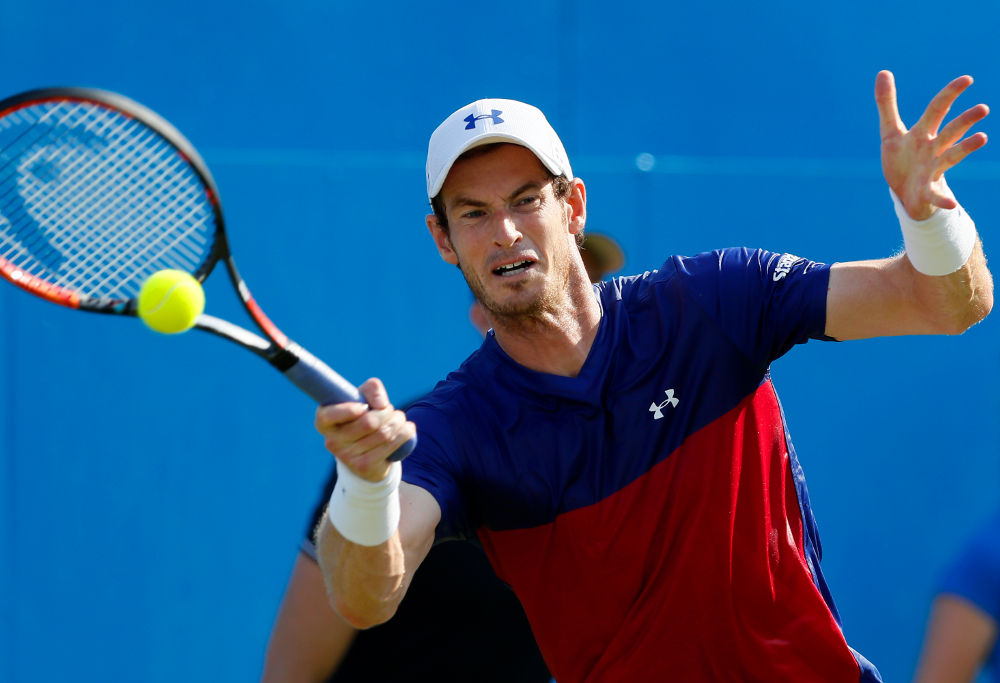
(AP Photo/Kirsty Wigglesworth)
But the biggest surprise of the French Open was the run to the semi-finals of unheralded Italian Marco Cecchinato, who became the first man to get that far at a major for four decades.
Prior to this year’s tournament, the 25-year-old had never won a grand slam main draw match, but he broke his duck in the best possible way, coming from two sets to love down to defeat Marius Copil in the opening round.
He proceeded to knock out two former quarter-finalists, Pablo Carreno Busta and David Goffin, before pulling off a major upset in the quarter-finals by defeating 2016 champion Novak Djokovic in four sets.
His run finally came to an end when he went down to the more experienced Dominic Thiem in the semi-finals.
This marked the third consecutive major tournament where there was a first-time semi-finalist, after Carreno Busta reached the last four at last year’s US Open and Hyeon Chung did likewise at the Australian Open in January, beating Djokovic in the fourth round en route.
And so with the European clay court season over for another year – well, in fact there are a few minor clay court tournaments still to take place after Wimbledon – attention now turns to the All England Club, where Roger Federer and Garbine Muguruza are the defending champions.
Federer, who again bypassed the entire clay court season, is back in action this week in Stuttgart, while Muguruza is due to play in Birmingham, where Petra Kvitova is the defending champion, next week.
Wimbledon starts on 2 July.





























































































